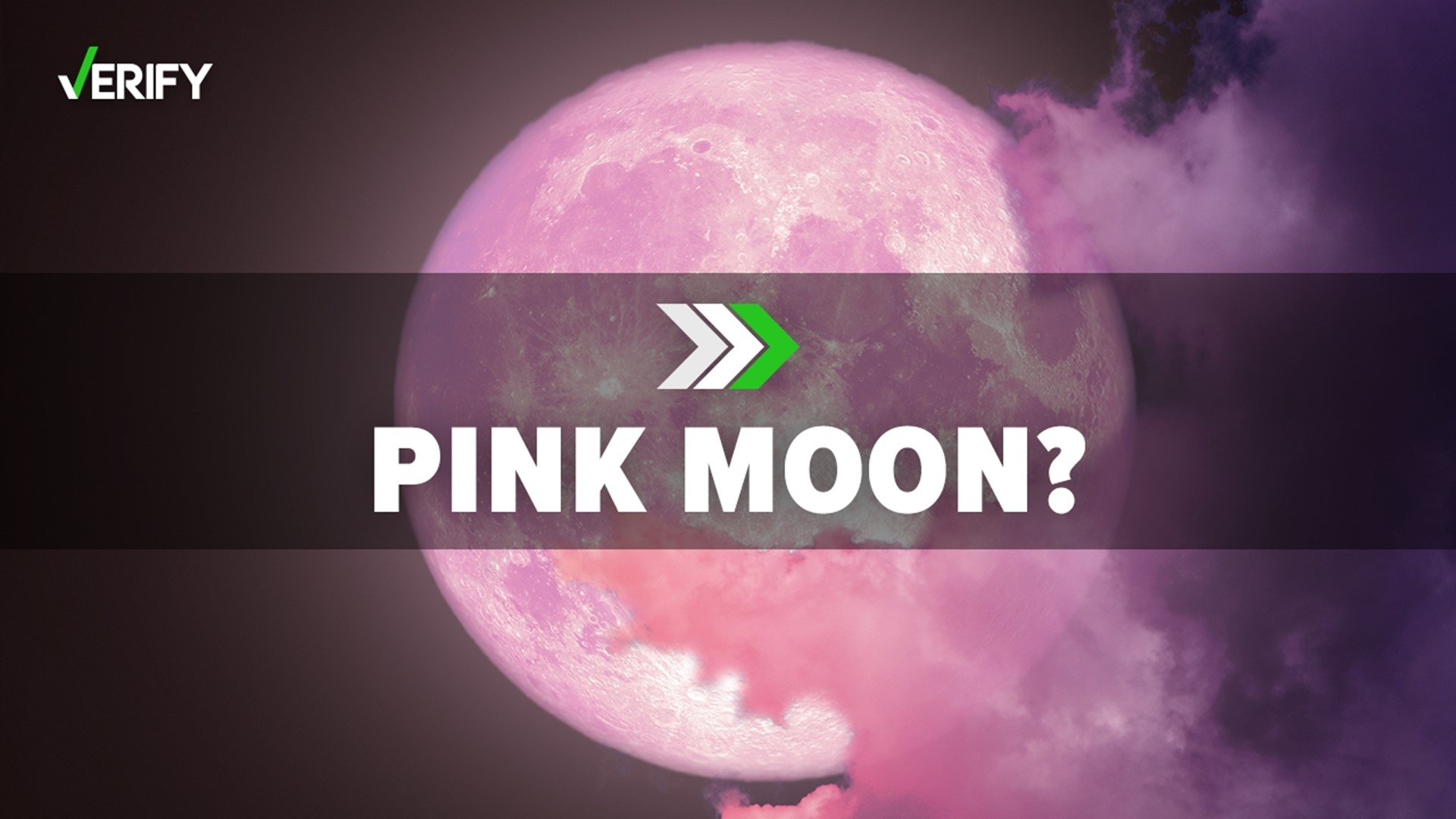If you look to the skies Saturday night, you'll see the "pink moon" -- but it won't be pink. Each month's full moon has a popular nickname, and the pink moon is on April 16, 2022.
NASA says the moon will reach its peak fullness at 2:55 p.m. EDT Saturday afternoon -- before the sky gets dark enough for us to see it. However, it will appear full from Friday through early Monday morning, making this a "full moon weekend."
Why is it called the pink moon?
Moon nicknames, popularized through farmers' almanacs, are based on what's happening in the natural world each month. The Farmers’ Almanac and the Old Farmers’ Almanac both say the nickname was inspired by a pink springtime flower called creeping phlox, or moss phlox.
“Although we wish this name had to do with the color of the Moon, the reality is not quite as mystical or awe-inspiring,” the Old Farmers’ Almanac says. “In truth, April’s full Moon often corresponded with the early springtime blooms of a certain wildflower native to eastern North America: Phlox subulata — commonly called creeping phlox or moss phlox — which also went by the name ‘moss pink.’”
Both almanacs say the tradition of nicknaming every month’s moon in North America began with Native American lunar calendars and was then adopted by early Colonial American settlers.
At least it's a nice name. March's full moon -- the "worm moon" -- was less lucky. Next on the calendar is the "flower moon" on May 16, then the "strawberry moon" on June 14.
It will be the first full moon of spring, making it the Paschal Moon in the Christian ecclesiastical calendar. NASA said it's also the Pesach or Passover Moon.
Can you sometimes see a colorful moon?
Nicknames aside, some lucky photographers might get to snap a rosy-hued photo of the pink moon. If atmospheric conditions are right, the moon can sometimes appear to be a different color when it is low on the horizon -- similar to how we get colorful sunsets.
“So that's part of why I would also encourage people to look at the moon when it's close to the horizon — when it's rising or when it's setting — because at that point, you'll be looking at it through the most amount of the Earth's atmosphere, which is gonna have all sorts of things in it,” said Jackie Faherty, a scientist and educator in the Department of Astrophysics at the American Museum of Natural History.
She said particles in the Earth's atmosphere, like smoke or even volcanic ash, could give the moon a warm hue at times.
The VERIFY team contributed to this report.

